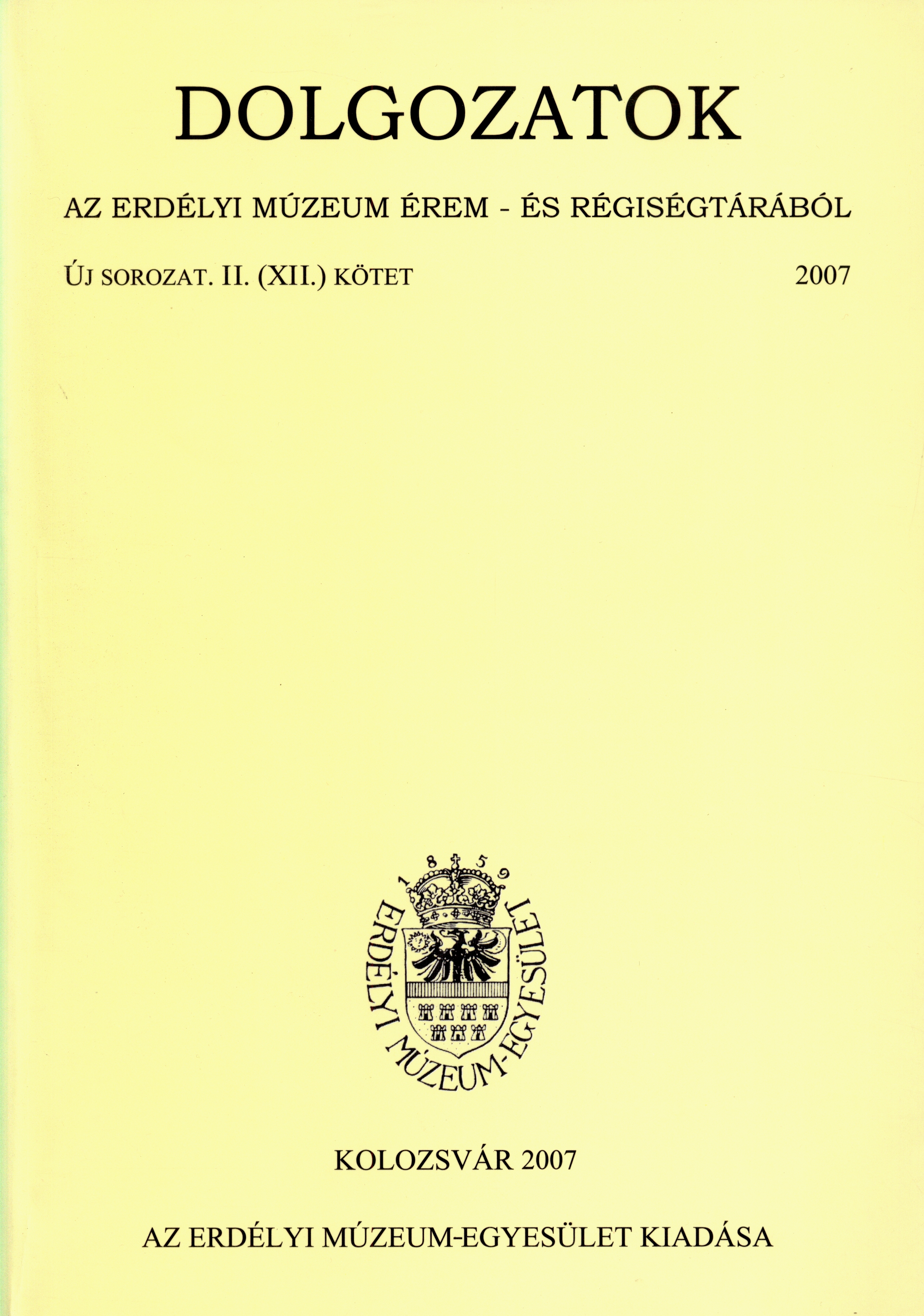Hoffmayer Simon tordai oltára
Hoffmayer Simon's Altar from Torda
Author(s): Attila WeiszSubject(s): Cultural history, Architecture, Visual Arts, Local History / Microhistory, Social history, 18th Century, 19th Century
Published by: Erdélyi Múzeum-Egyesület
Keywords: church altar; Turda, Simon Hoffmayer; church furniture
Summary/Abstract: The paper deals with the 18-19th century furnishings of the Roman Catholic church in Torda/Turda. The Baroque side-altars originally were dedicated to St. Francis of Assisi and St. Clare of Assisi, the central image from 1827 of the southern side-altar there is at the parsonage, the one of the northern side-altar is missing. St. Rose of Palermo, St. Sebastian and St. Roch whose figures appear on the northern side-altar, were respected as protectors against plague, as well as Francis Xavier whose figure can be seen on the southern side-altar. On the southern side-altar there can be seen a supposedly earlier medallion picture which depicts the Mocking of Christ. On the evidence of the documents belonging to the archive of the parsonage it is probable the two side-altars were brought in 1788 from Kolozsvár/Cluj, from a Franciscan Third Order nunnery which was put a stop to by a decree of Joseph the II's in 1787. The monumental high altar of the church by mistake was considered a work of a workshop from Pest until now. From the entries of the parsonage's archive it came to light that the altar was made between 1794-1800 by Simon Hoffmayer, the most important sculptor of Transylvania on that time, to the order of Ignác Batthyány, bishop of Transylvania. The central statues' composition of the altar with baldachin represents the Crucifixion with Mary, Mary Magdalena and John, with the Father above. Numerous analogies of the statue's movements, details can be seen at the other works of Hoffmayer. The actual architectural shape of the church's interior had been ready by 1822, the painted decoration occurred after that, by the mostly unknown painter, János Vitkai from Marosvásárhely/Tirgu Mures. Vitkai made the gilding of the high altar (originally the figures were painted and Vitkai's colour sketch of gilding survived), the gilding of the side-altars and the gilding of the pulpit (the pulpit itself was probably made by Csűrös Antal, a follower of Hoffmayer.). The marble imitating wall-paintings and the inscriptions, too, are the works of Vitkai, as well as the two wall paintings of the choir's vaulting which depict the birth of Mary and the Ascension of Mary (the third segment of the vaulting collapsed in 1944, the painting that can be seen there is recent).
Journal: Dolgozatok az Erdélyi Múzeum Érem- és Régiségtárából. Új sorozat
- Issue Year: 2007
- Issue No: II
- Page Range: 217-252
- Page Count: 36
- Language: Hungarian

